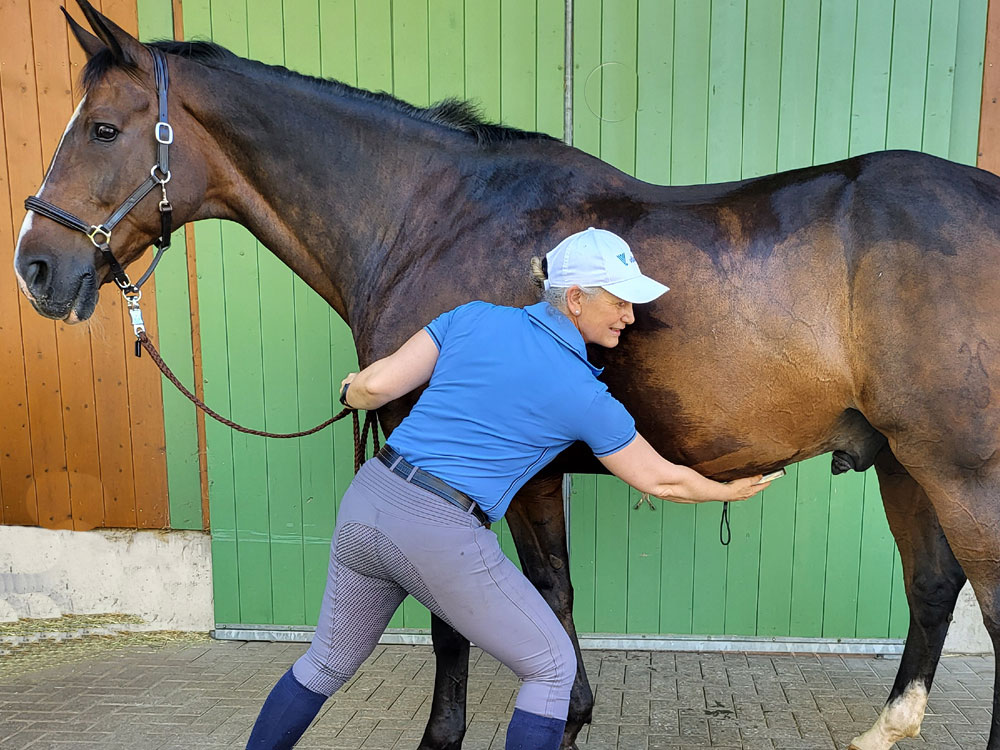VITALIZE YOUR ANIMAL WITH THESE BASIC VITALIZATION POINTS
According to Traditional Chinese Medicine (TCM) there are so-called meridians, energy
pathways. Through acupuncture points, these meridians – and thus organs and areas – can be reached and stimulated. This also applies to animals. And the best part: it works even without needles.
In this video you can see a horse that is visibly comfortable under the Beosigner®. And sometimes looks around attentively. No wonder: we were on-site with a full film crew and equipment. A new situation for our animal testimonial Felina.
The quick and easy way to vitalise your pet
Hold the Beosigner® on the corresponding acupuncture points, move it over specific areas, or along meridians.
What you can also do: place the BeoTape around a body part of your animal and use the Beosigner® there. While the BeoKey Animal Complete is working, you have your hands free – for grooming or cuddling, for example. After a brief overview, we will introduce you to the specific places for vitalization, including the good reasons for each point or meridian.
Overview of basic vitalization points for animals

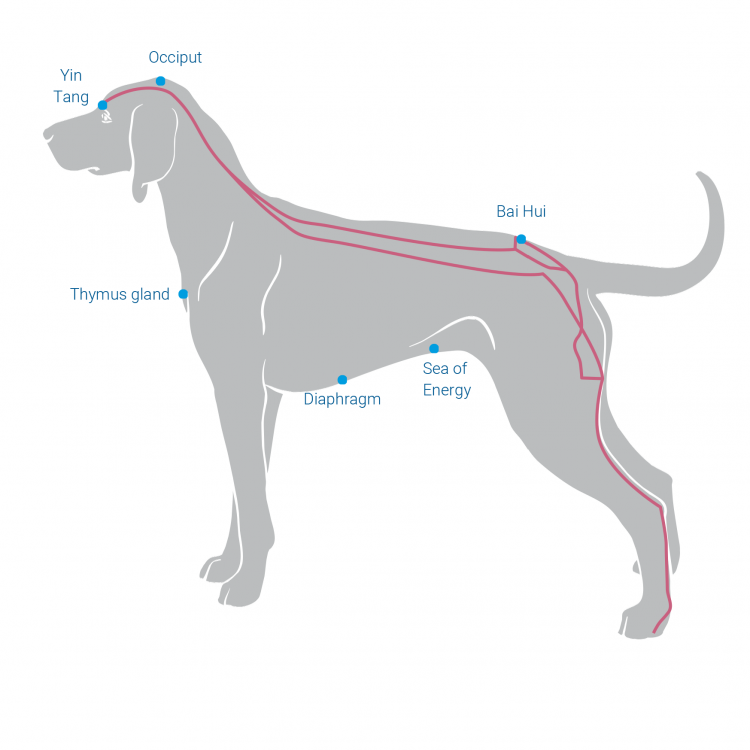
Basic vitalization points for regular use
Bai Hui
Thymus gland
Occiput
Diaphragm
Supporting basic vitalization points and an all-rounder for your animal
Yin Tang
"Sea of Energy"
Bladder Meridian
Basic vitalization point Bai Hui (Sacrum)
You can find the Bai Hui point on your pet in two locations. The point in front of the sacrum is the relevant one for basic vitalization.
How to locate the Bai Hui on your pet:
Feel for a small depression in front of the sacrum – that is where the Bai Hui is located.
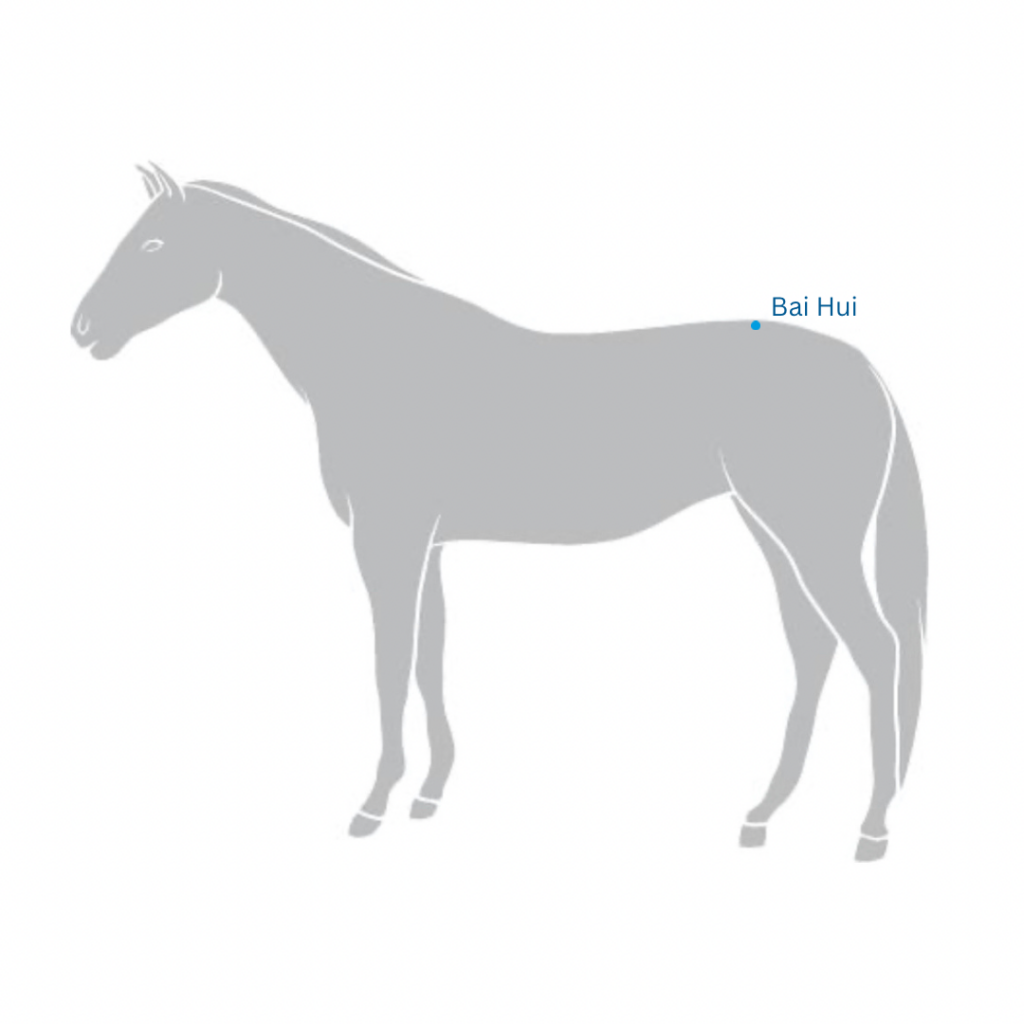
The effect area of the Bai Hui
In Traditional Chinese Medicine, the Bai Hui is a central trigger point for reducing inflammation and promoting relaxation.
What the Bai Hui stands for:
- Vitalizes the hind back, hips, and hind legs
- Activates the hindquarters (for horses)
- Supports the hips (for dogs)
- Relieves muscle tension and promotes relaxation
- Aids in regeneration, stabilization, and mobility
Additionally, the Bai Hui is used to treat pain and is often chosen for addressing higher physical demands in sports, such as with competition horses.
Main vitalization point thymus gland (CV-21)
The thymus gland is an organ of the lymphatic system and is often referred to as the "brain" of the body's immune defense.
How to locate the thymus gland on your pet:
You will find the thymus gland – depending on the size of the animal, one to several finger widths – below the tip of the sternum. The thymus, also known as the "Thymus Gland," lies on the Conception Vessel Meridian (CV).
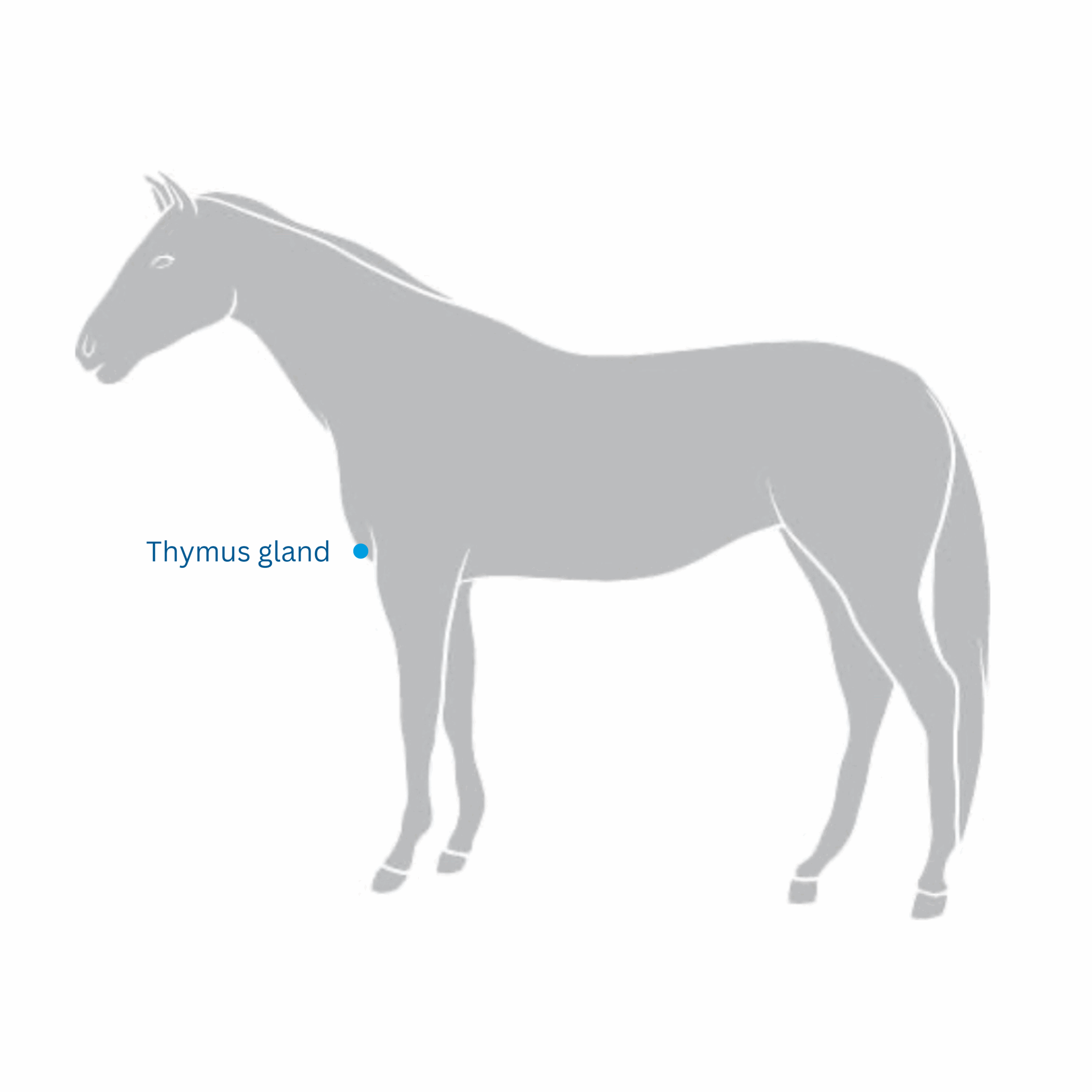
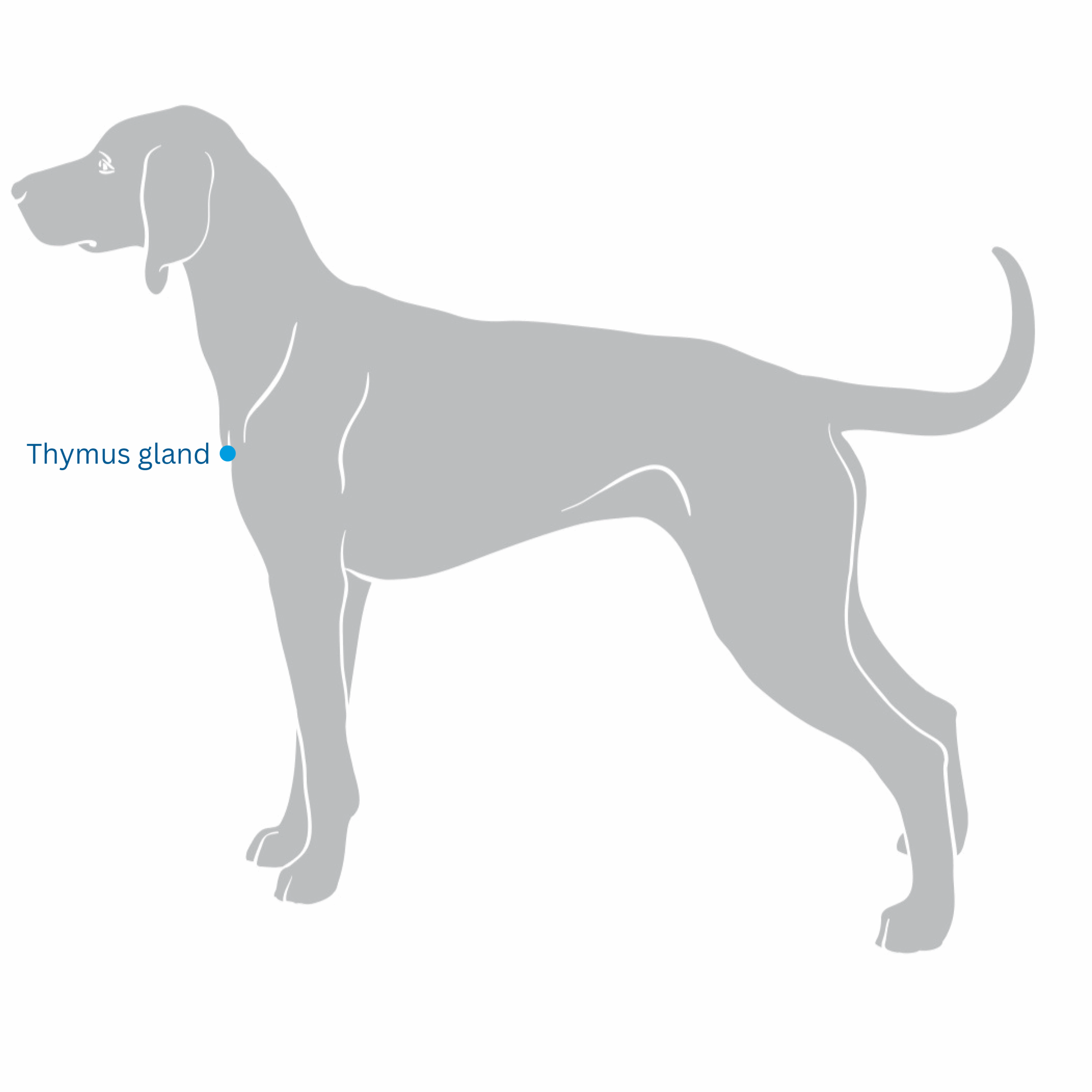
The effect area of the thymus gland
A small and inconspicuous organ – yet a crucial part of a well-functioning immune system. This is true not only for humans but also for animals.
What the thymus gland stands for:
- When exposed to pathogens like viruses or bacteria, the thymus gland produces T- lymphocytes, which are essential for the body's immune response.
Main vitalization point occiput
The occiput is an anatomically significant point and truly fulfills its role as a basic vitalization point.
How to locate the Occiput on your pet:
- For horses, dogs, cats, and animals with a similar body structure: it is located at the highest point on the head, centrally between the ears.
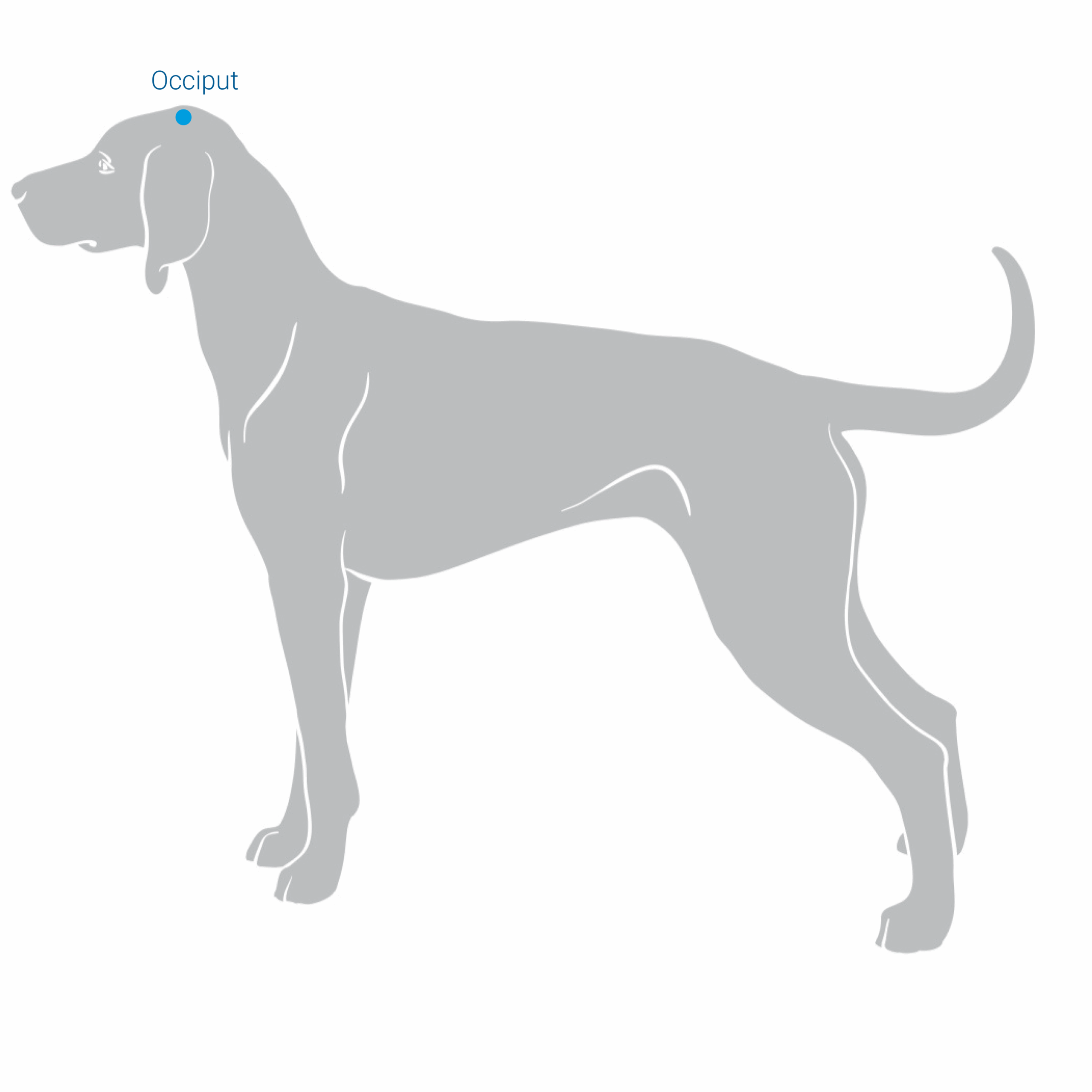
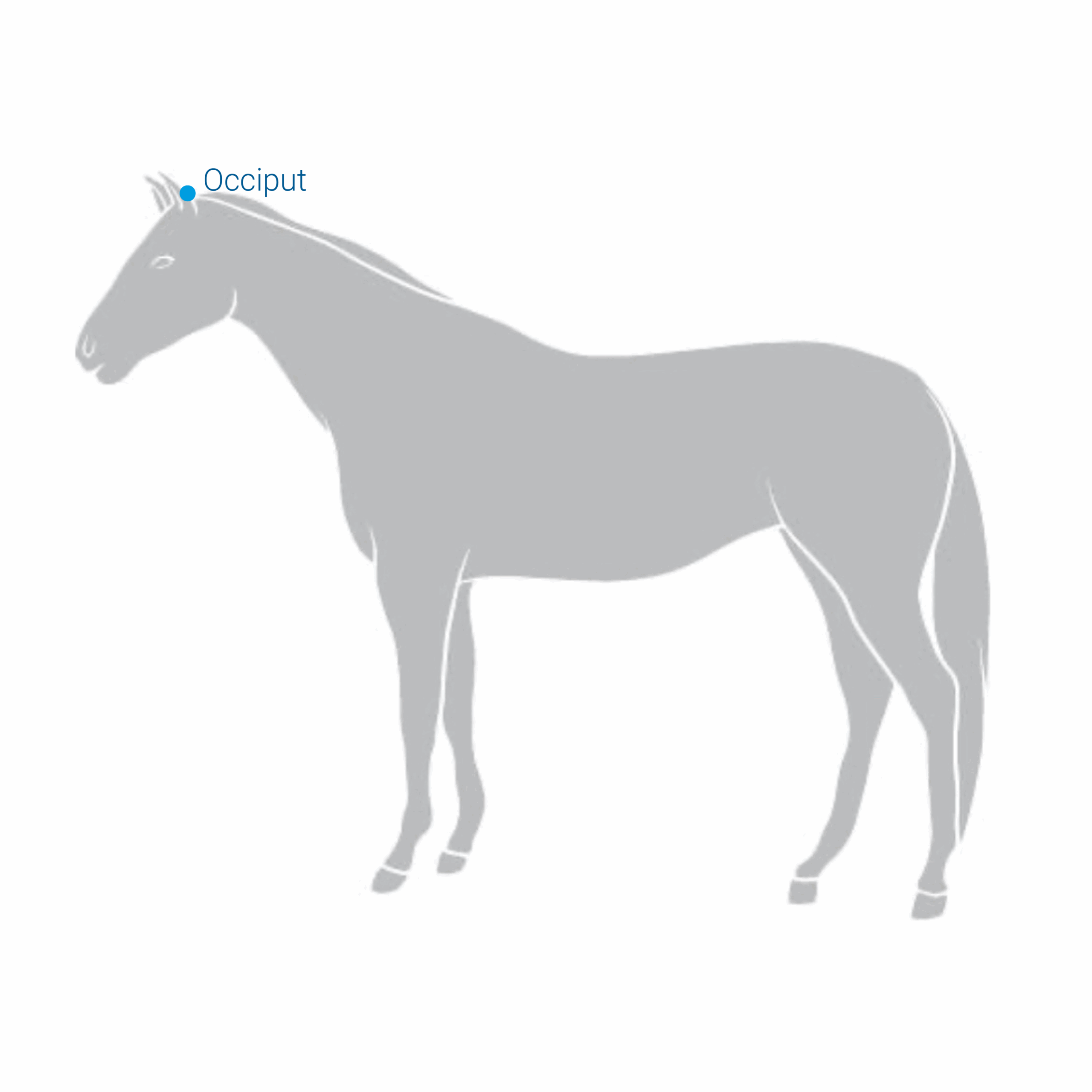
The effect area of the occiput
The occiput has a broad range of effects: muscles, neck ligaments, nervous systems, and spinal cord.
What the occiput stands for:
- Relieves headaches and stiff necks, with a positive, relaxing effect on the Atlas and Axis (the first and second cervical vertebrae)
- Strengthens weak muscles
- Stabilizes the entire body, especially valuable for sensitive areas like the neck and cervical spine
- Regulates the nervous systems
- Supports the animal during a cold or respiratory illness
Occiput and horses – another special feature
Many nerve pathways run along the head of the animal, and blood vessels lie close to the surface of the skin. A bridle – depending on the type – can potentially exert significant pressure on sensitive areas. The Beosigner® with the BeoKey Animal Complete relaxes these areas and thereby helps to relax your animal. This is beneficial even if you have chosen an anatomical bridle that better distributes the pressure
Main vitalization point diaphragm (CV-17)
Anyone who has explored the topic of breathing understands its role in the organism, as well as the importance of the diaphragm, which is part of the respiratory muscles.
How to locate the diaphragm point on your pet:
The acupuncture point for the diaphragm is located at the end of the sternum. It lies on the Conception Vessel Meridian (CV).
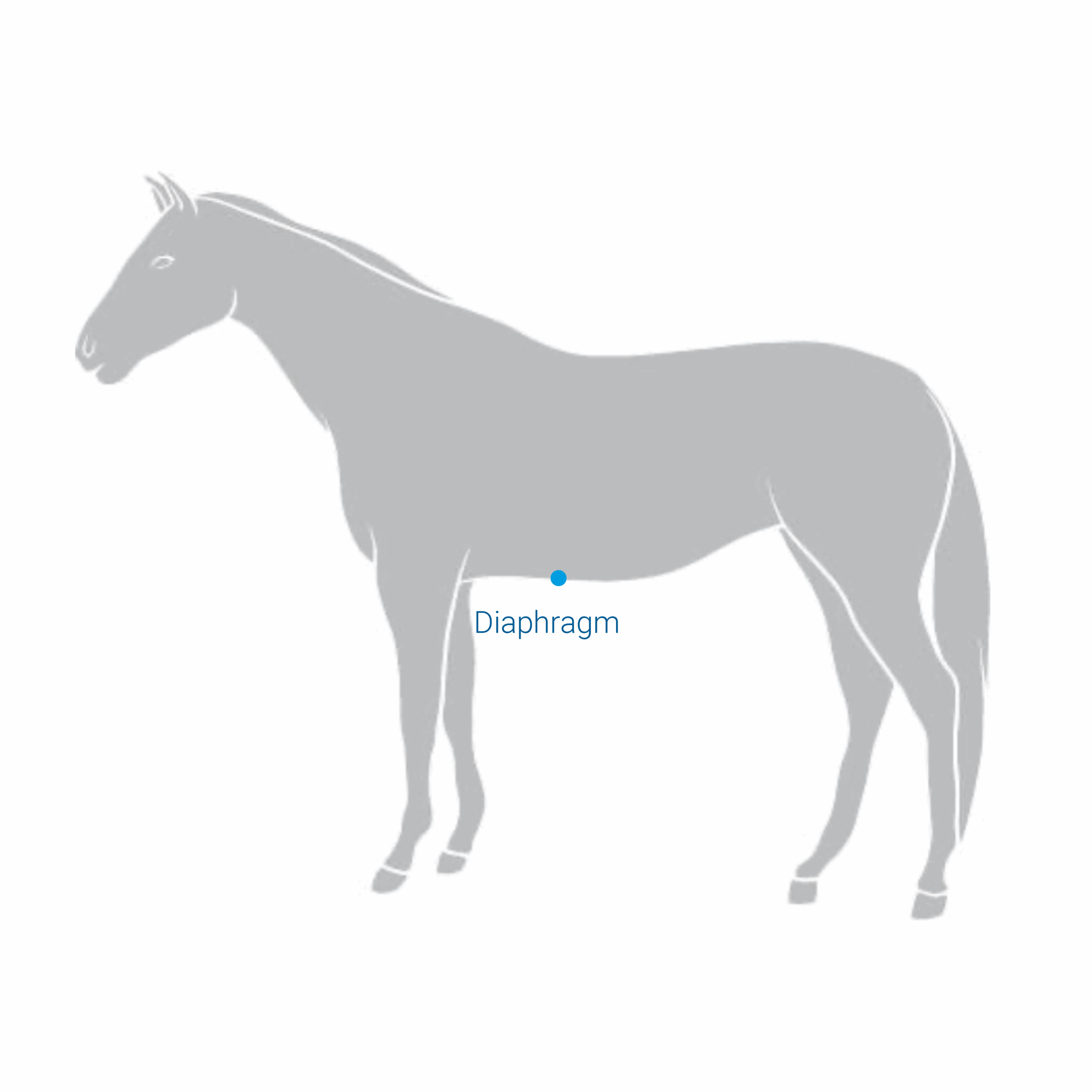
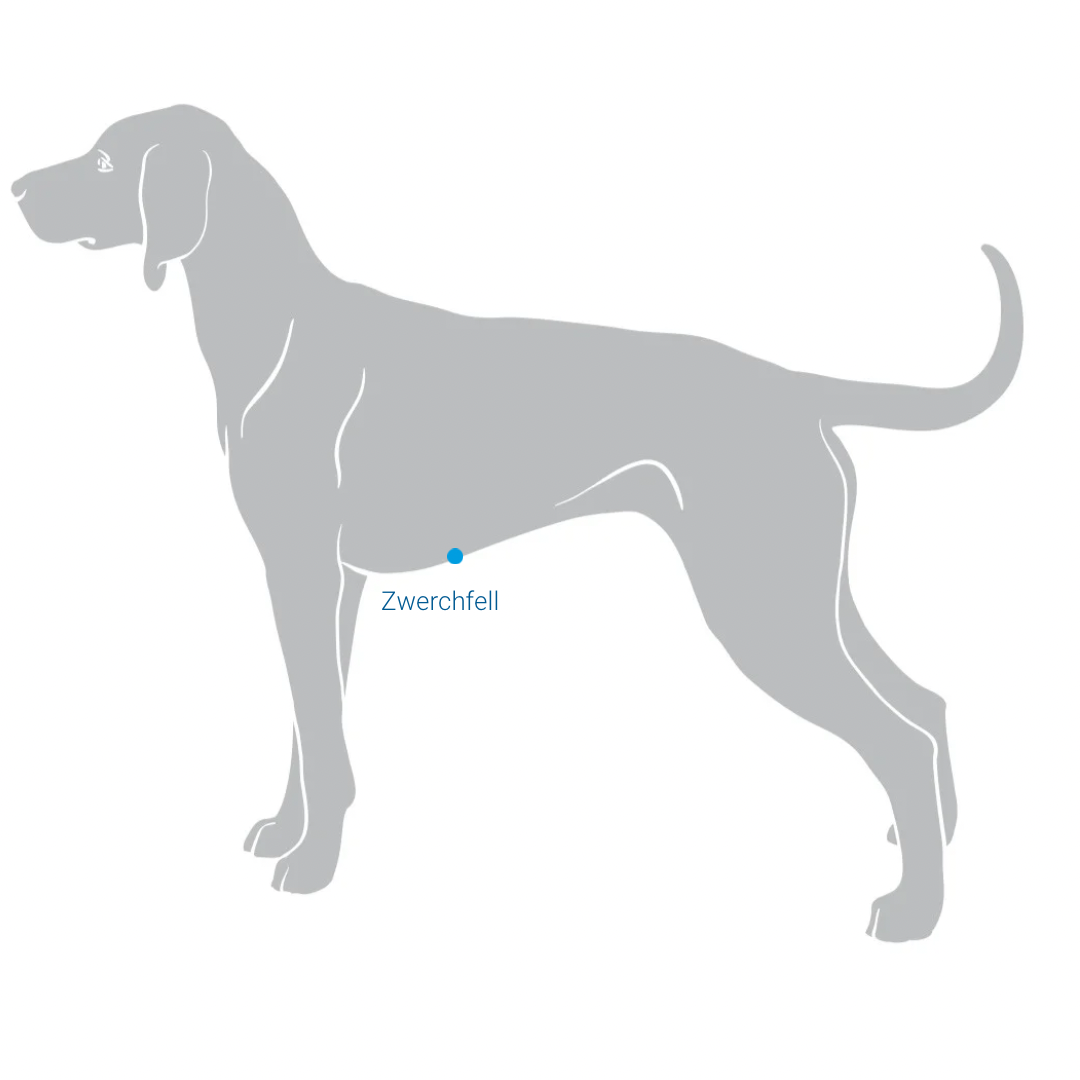
The effect area of the diaphragm
What the diaphragm stands for:
- Stabilizes and relaxes the ribcage, chest, and abdominal muscles, as well as the trunk muscles
- Supports the abdominal line
- Helps with breathing issues
- Regulates the heart
- Calms stress and anxiety
- Relieves physical and emotional trauma
The daily basic vitalization points in practice
From theory to practice. In the following photos, you will see gelding Lillebrore with Karin Link. These images will not only give you a better understanding of working with the Beosigner®, but also show you how the horse behaves during the process.
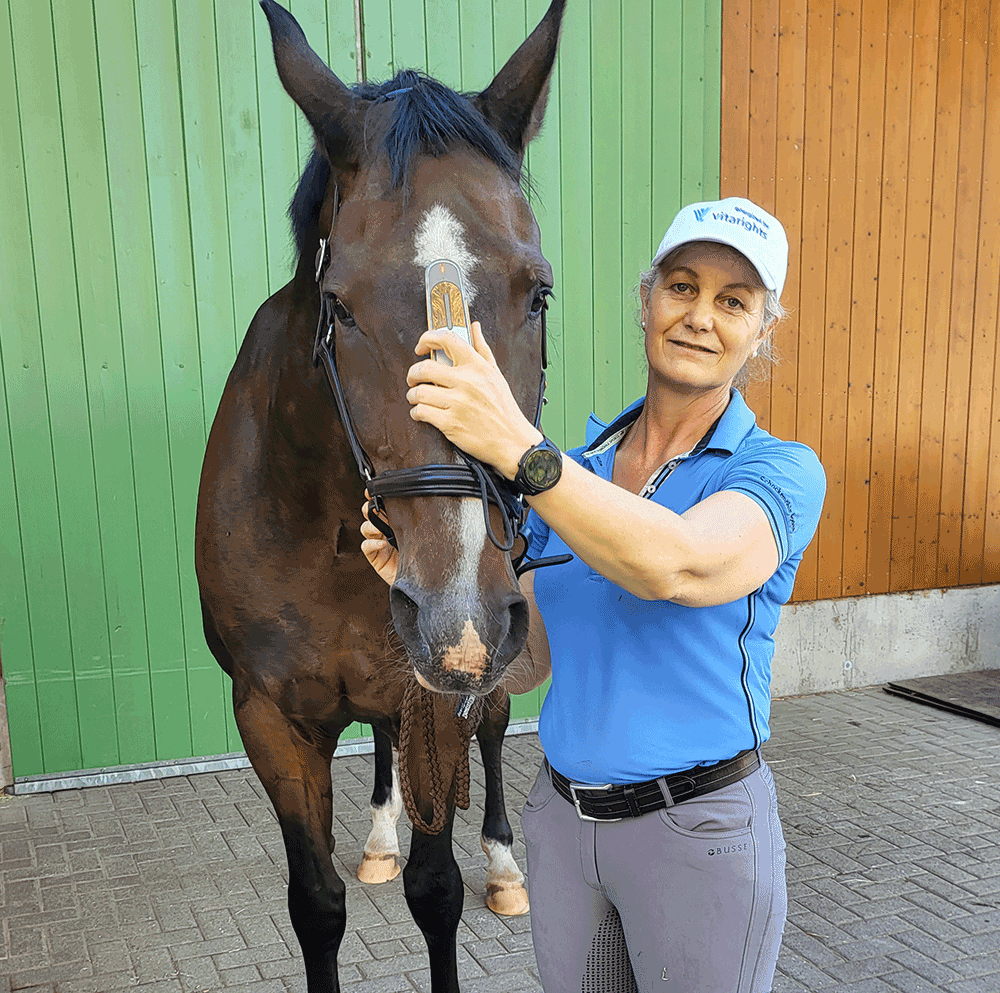
Bai Hui
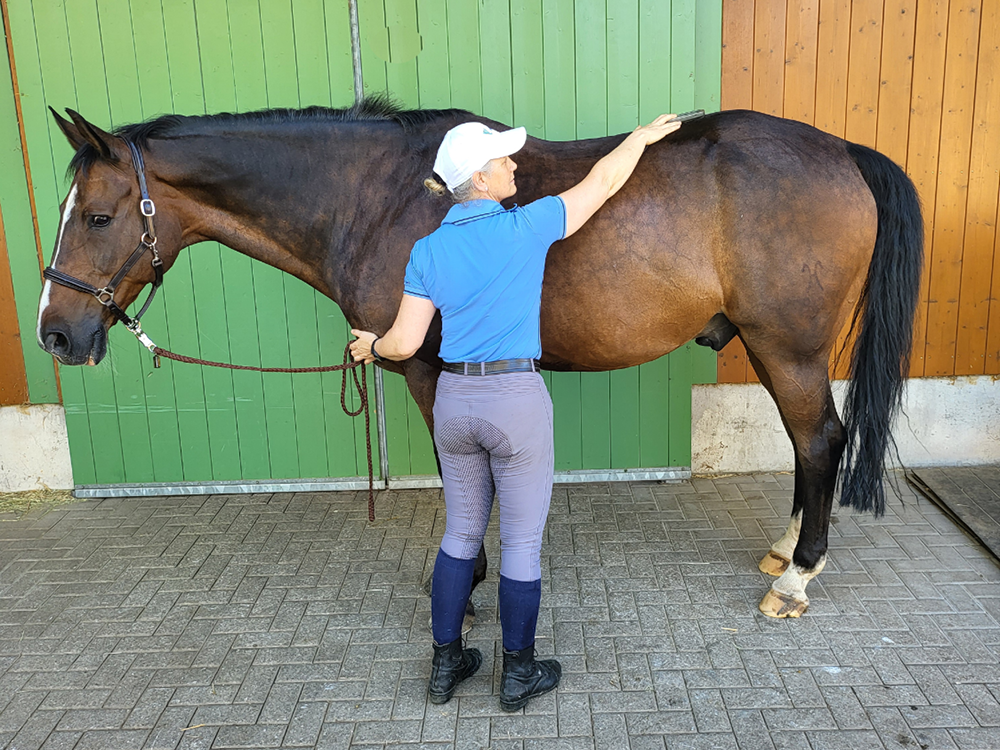
Thymus Gland
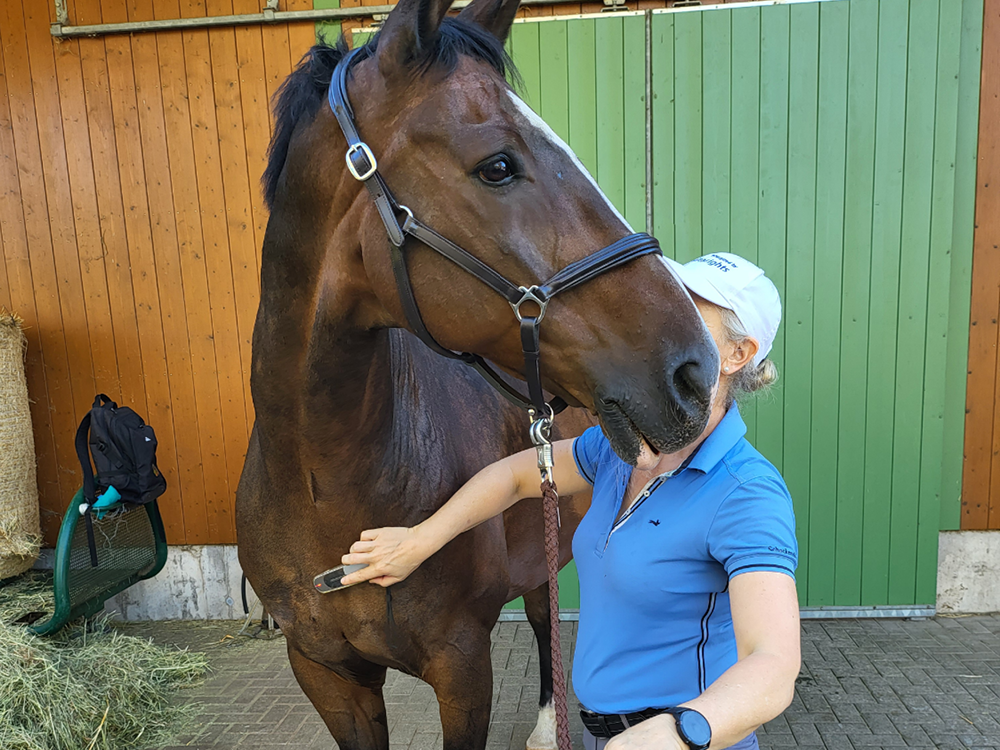
Occiput
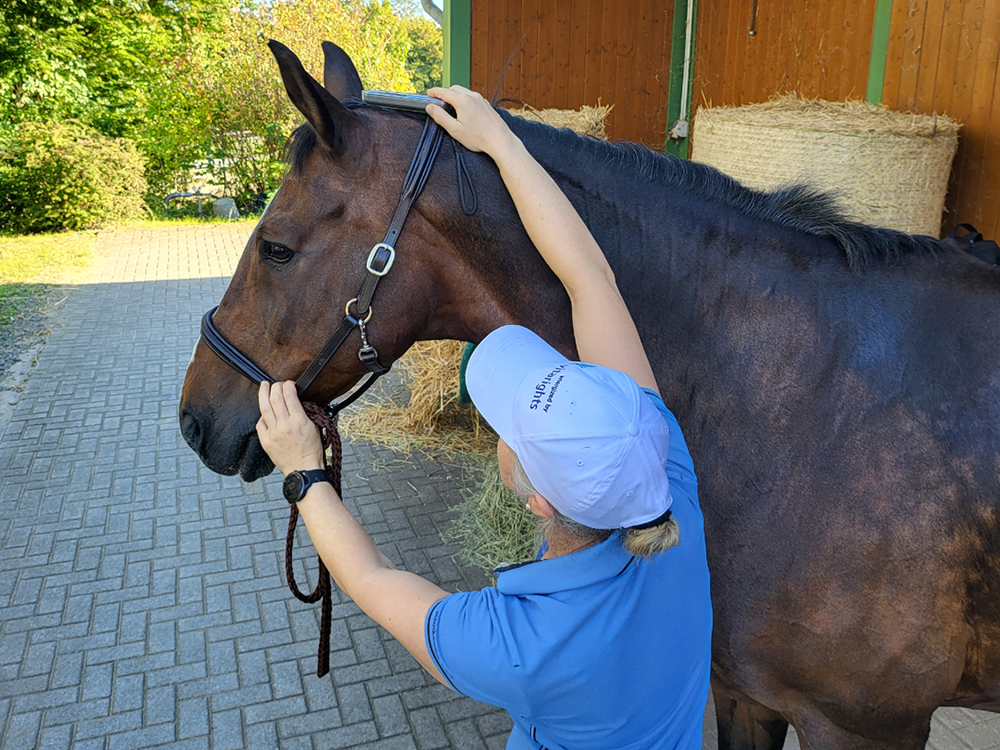
Diaphragm
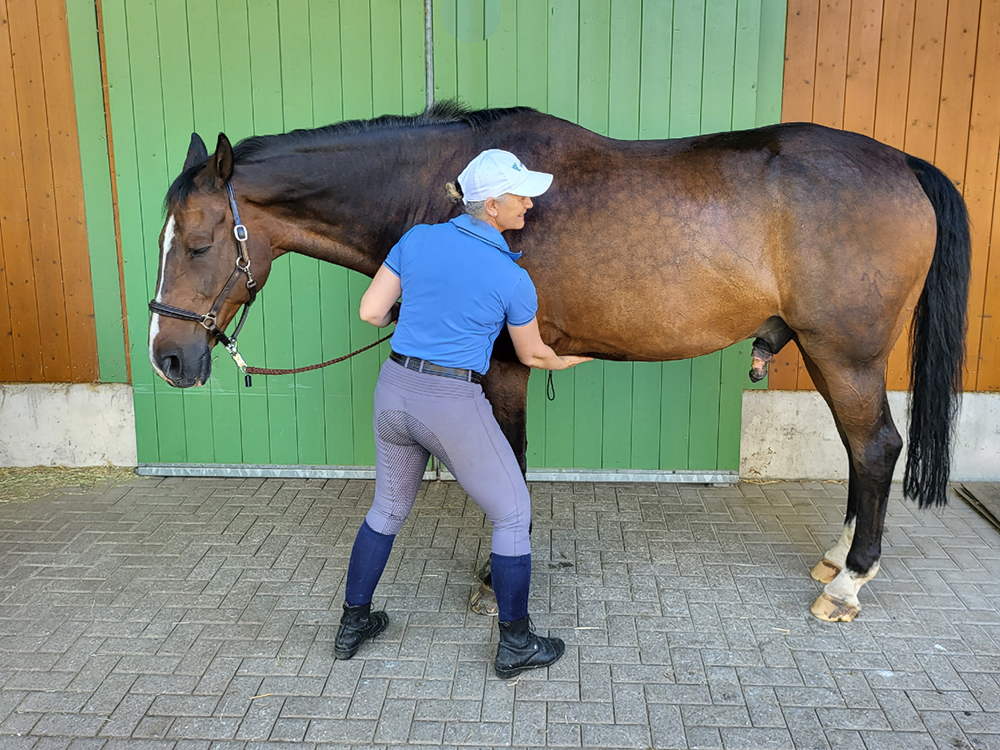
Supporting basic vitalization points and an all-rounder for your pet
In addition to the four basic vitalization points for daily use, there are two other important points and an all-rounder for your pet: Yin Tang, the "Sea of Energy," as well as the Bladder Meridian. Observe your pet, and you will know which acupuncture points or meridians you can work on additionally and when.
Main vitalization point Yin Tang (GV-24)
The Yin Tang is a great complement to the previously mentioned basic vitalization points due to its broad range of effects. It is located on your pet's head.
How to locate the Yin Tang on your pet:
The Yin Tang is easy to access: it is located centrally between the eyebrows.
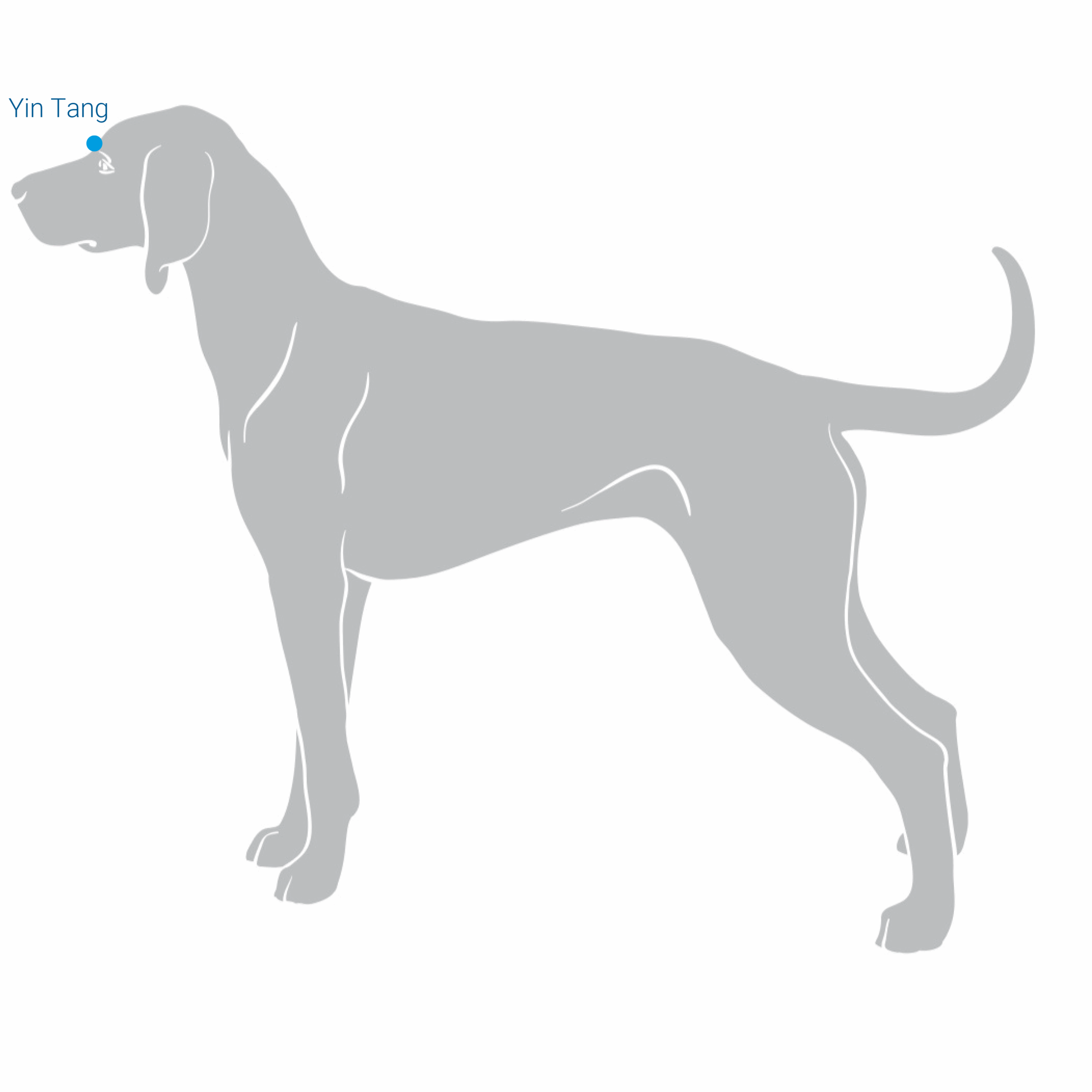
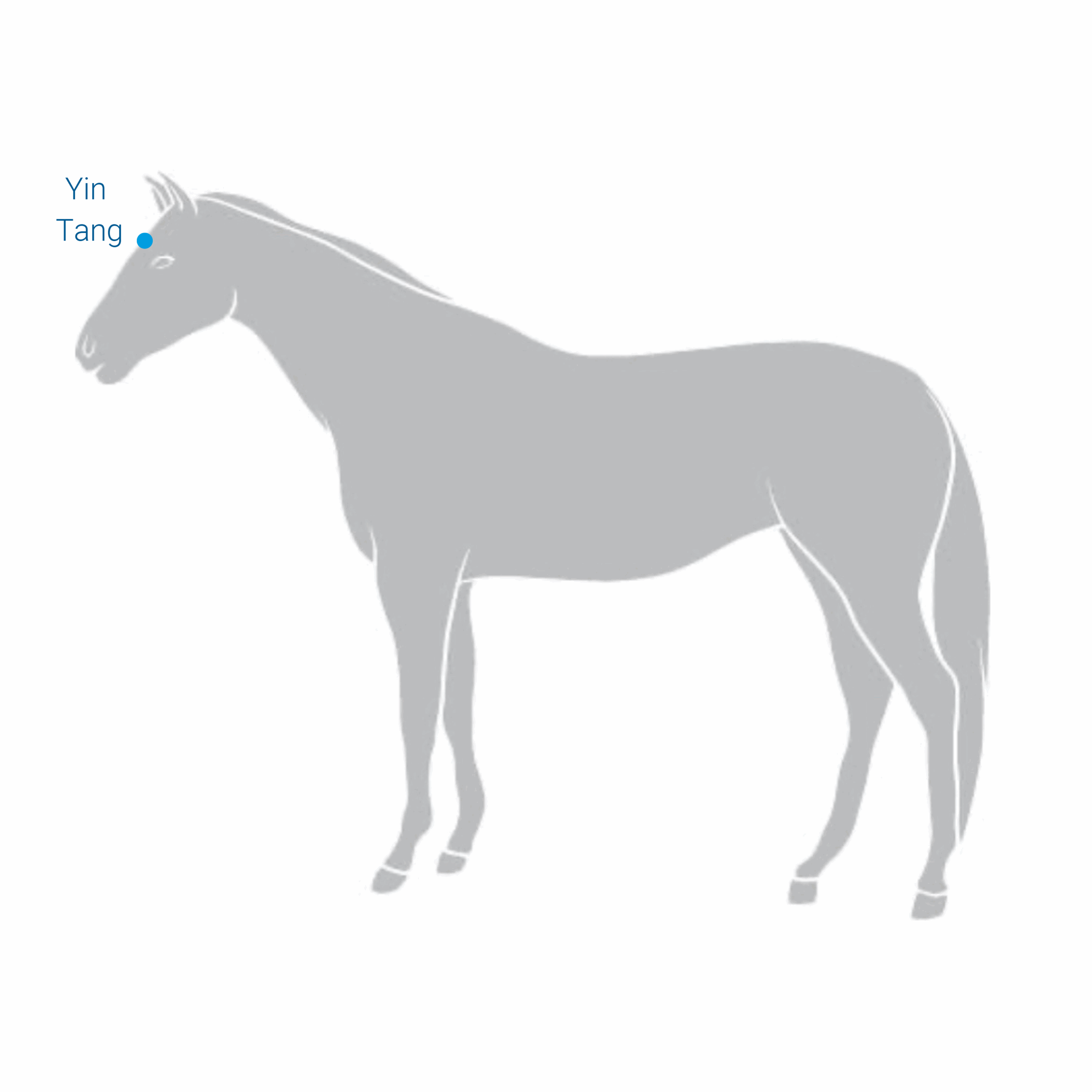
The effect area of Yin Tang
The Yin Tang affects the pituitary gland, eyes, sinuses, base of the skull, and temples.
What the Yin Tang stands for:
- Controls the pituitary gland, making it important for regulating the hormonal system
- Strengthens concentration
- Helps with focus
- Stimulates nerves for stress reduction
- Supports in cases of anxiety and restlessness. For example, it helps relieve tension in the head during competitions or events.
Main vitalization point "Sea of Energy" (CV-7)
The energy center – just as the name suggests. It is rightfully one of the most important points for vitalization.
How to locate the "Sea of Energy" on your pet:
The "Sea of Energy" is located behind the navel. It may be in a sensitive, intimate area. Since you know your pet well, you will be able to recognize how to approach this point.
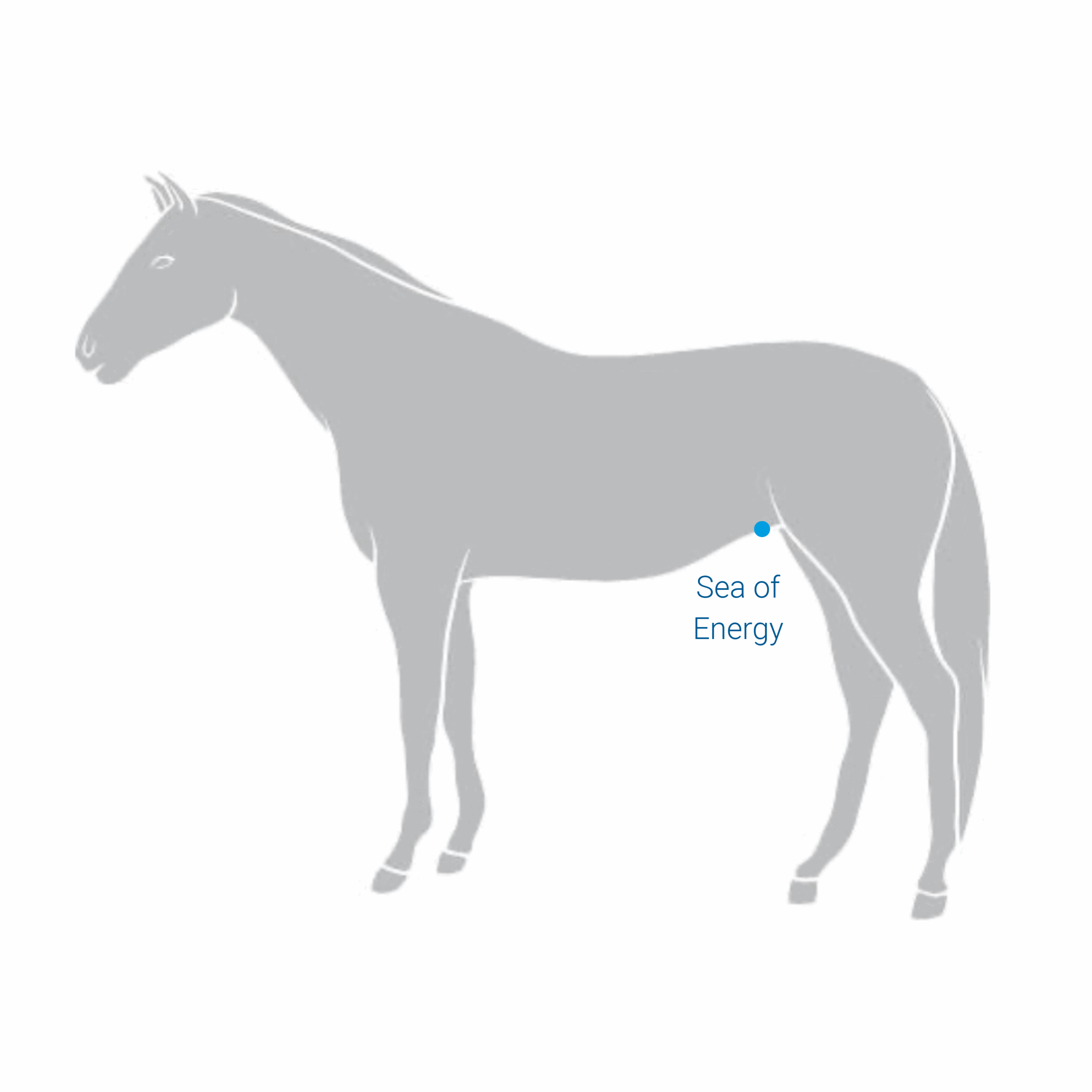

The effect area of the "Sea of Energy"
The significant effect area for the acupuncture point "Sea of Energy" includes the intestines, adrenal glands, and pelvic organs.
What the “Sea of Energy” stands for:
- Provides energy
- Stimulates the organism
- Focuses strength in the abdominal organs
Bladder Meridian
An all-rounder, encompassing 67 acupuncture points.
How the Bladder Meridian runs on your pet:
The Bladder Meridian begins at the inner corner of the eye and ends at the outside of the hind leg – on both sides of the body. The meridian runs along the entire neck and back, making it the longest meridian in your pet's body.
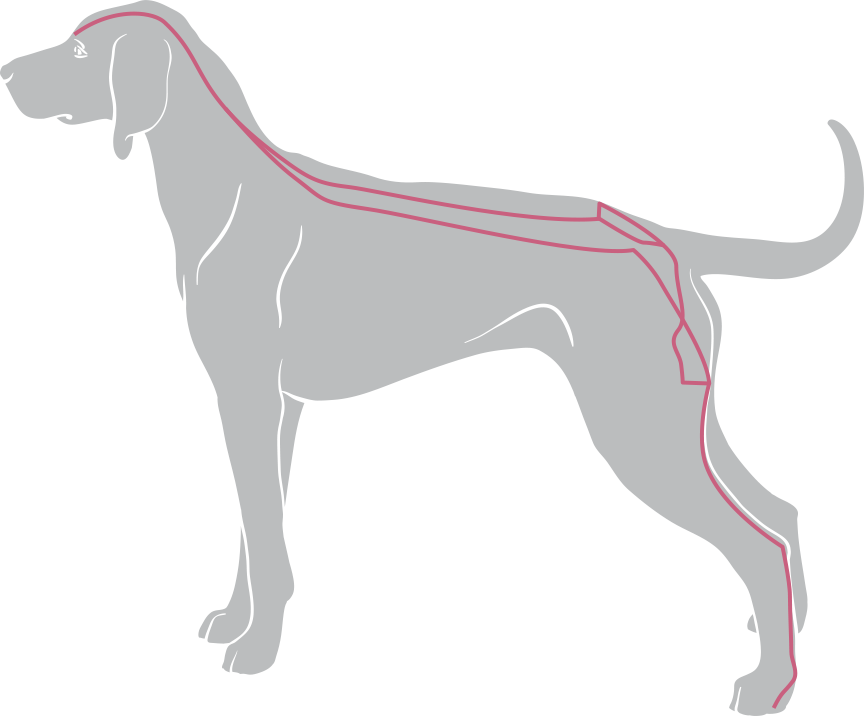

The effect area of the Bladder Meridian
In short: the entire animal.
What the Bladder Meridian stands for:
- Relieves pain in the hindquarters (e.g., knee and hip joints)
- Helps with mobility issues in both the front and hind limbs
- Reduces back problems
- Relaxes the animal both physically and mentally
- Stabilizes on a physical level
- Assists with chronic conditions
The additional basic vitalization points and the Bladder Meridian in practice
You can take another look over Karin Link's shoulder. Lillebrore is enjoying the Beosigner® on the additional acupuncture points and the all-rounder, the Bladder Meridian.
Yin Tang
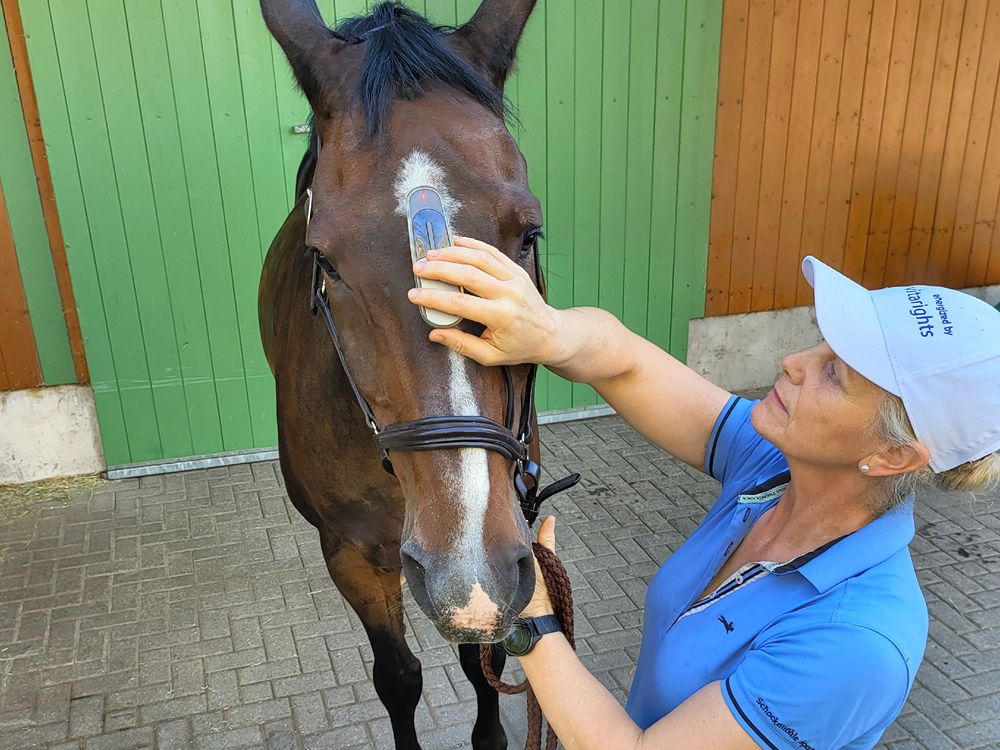
"Sea of Energy"
